Punakha
Punakha is a district located in the western part of Bhutan, near the capital city of Thimphu. It is one of the most beautiful and historically significant regions of the country, known for its stunning natural scenery, rich cultural heritage, and important religious sites.
Punakha is home to the Punakha Dzong, a 17th-century fortress and monastery that is considered one of the most beautiful and impressive structures in Bhutan. The dzong served as the seat of government for several centuries, and is now used as a winter residence for the chief abbot of Bhutan.
Other important landmarks in Punakha include the Chimi Lhakhang, a temple dedicated to the “Divine Madman” and known for its fertility blessings; and the Khamsum Yulley Namgyal Chorten, a beautiful Buddhist stupa located on a hilltop overlooking the valley.
Festival (Tshechu)
The “Tshechu” is a religious festival that is celebrated annually in Bhutan. It is one of the most important events in the country and is held in honor of Guru Rimpoche, the saint who is believed to have introduced Buddhism to Bhutan.
During the Tshechu festival, locals and tourists gather in the courtyard of the dzong (fortress) to witness the colorful and vibrant religious dances, known as cham dances. These dances are performed by monks and laypeople who wear traditional costumes and masks and act out various stories and myths from Bhutanese Buddhism. The Tshechu festival also includes various other religious rituals, prayers, and offerings.
The Tshechu festival is not only a religious event but also a social occasion where people come together to celebrate their culture and traditions. It is a time when families and friends reunite, and people from different regions of Bhutan gather to share their experiences and enjoy the festivities.
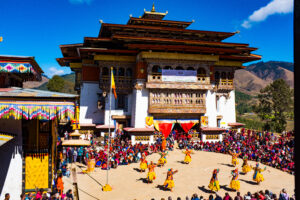

5 Days Travel Plan
Embark on an enchanting journey through the mystical kingdom of Bhutan with our meticulously crafted 5-day travel plan. Get ready...

(Solo Trip)5 Days Travel Plan
Looking for an extraordinary travel experience as a single traveler? Look no further than Bhutan! Known as the “Land of...
Food
Bhutanese cuisine is unique and distinctive, with a strong emphasis on spicy flavors and the use of chili peppers. The country’s cuisine is heavily influenced by its geography, climate, and culture, and it features a variety of dishes that are made using locally sourced ingredients and traditional cooking techniques.
Some of the staple foods in Bhutanese cuisine include red rice, buckwheat, maize, and wheat. Meat, particularly yak meat, is also a popular ingredient in many dishes, as well as dairy products like cheese and butter. Bhutanese cuisine also features a range of vegetables, including potatoes, spinach, and turnips, which are often used to make traditional dishes like “ema datshi” (a spicy chili and cheese stew) and “phaksha paa” (pork cooked with spicy red chili paste).
Some other popular Bhutanese dishes include:
- “momos” (dumplings filled with vegetables or meat)
- “suja” (butter tea made with tea leaves, yak butter, and salt)
- “jasha maru” (spicy minced chicken dish)
- “thukpa” (a noodle soup with vegetables and meat)
- “sikam paa” (dried pork cooked with radish and chili)
Overall, Bhutanese cuisine is flavorful and spicy, with a focus on using fresh and locally sourced ingredients. If you visit Bhutan, be sure to try some of the country’s unique and delicious dishes to experience the country’s culinary traditions.

5 Days Travel Plan
Embark on an enchanting journey through the mystical kingdom of Bhutan with our meticulously crafted 5-day travel plan. Get ready...

(Solo Trip)5 Days Travel Plan
Looking for an extraordinary travel experience as a single traveler? Look no further than Bhutan! Known as the “Land of...
Homestay
as well as to support local communities. Here are some things to keep in mind when considering a homestay in Bhutan:
- Expect a simple way of life: Homestays in Bhutan usually involve staying in a traditional farmhouse or village home, where the lifestyle may be simple and rustic. Don’t expect luxury amenities, but do expect warm hospitality and a chance to experience authentic Bhutanese culture.
- Learn about local customs and traditions: Staying with a local family is a great way to learn about Bhutanese customs and traditions, such as dress, food, and daily routines. You may also have the opportunity to participate in local festivals and celebrations.
- Be prepared for cultural differences: Bhutanese culture may be different from what you’re used to, and it’s important to approach your homestay with an open mind and a willingness to learn. For example, it’s customary to remove your shoes before entering a home, and eating with your hands is common.
- Support sustainable tourism: Homestays can provide a source of income for local communities, and staying with a local family can help support sustainable tourism practices in Bhutan. It’s important to choose a homestay that is committed to sustainable tourism and ethical practices.
- Respect your host family: When staying with a host family, it’s important to be respectful of their customs, traditions, and way of life. This may include dressing modestly, asking permission before taking photographs, and being mindful of your impact on the environment.

5 Days Travel Plan
Embark on an enchanting journey through the mystical kingdom of Bhutan with our meticulously crafted 5-day travel plan. Get ready...

(Solo Trip)5 Days Travel Plan
Looking for an extraordinary travel experience as a single traveler? Look no further than Bhutan! Known as the “Land of...
Monastery Visit (Dzongkhag)
A visit to a Bhutanese monastery can be a unique and enriching experience. Monasteries, also known as “dzongs,” are an important part of Bhutanese culture and serve as centers for religious, cultural, and social activities. Here are some things you can expect during a visit to a Bhutanese monastery.
- Dress appropriately: Visitors are expected to dress modestly when visiting a monastery. This means wearing clothes that cover your shoulders and knees, and removing your shoes before entering the main building.
- Learn about the history and culture: Many monasteries in Bhutan have a rich history and are associated with important religious figures and events. Visitors can learn about the monastery’s history, architecture, and cultural significance by speaking with a local guide or a monk.
- Observe religious ceremonies: Monasteries are active religious centers, and visitors may have the opportunity to observe religious ceremonies, such as prayer sessions or chanting, during their visit.
- Experience traditional Bhutanese art and architecture: Monasteries in Bhutan are known for their stunning architecture and intricate artwork, such as murals and statues. Visitors can admire these works of art and learn about their cultural and religious significance.
- Meet monks and learn about monastic life: Visitors may have the opportunity to meet monks during their visit and learn about their daily routines and practices. This can be a fascinating insight into the life of Bhutanese monks and their role in Bhutanese society.
Overall, a visit to a Bhutanese monastery can be a memorable and educational experience, offering a glimpse into Bhutan’s rich cultural and religious traditions.
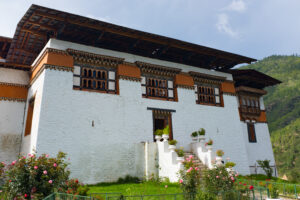
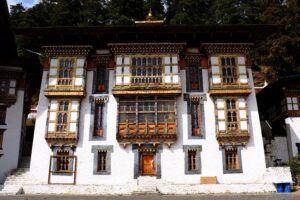
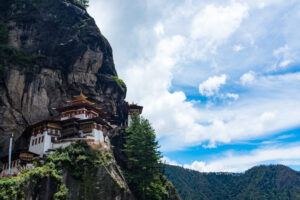

5 Days Travel Plan
Embark on an enchanting journey through the mystical kingdom of Bhutan with our meticulously crafted 5-day travel plan. Get ready...

(Solo Trip)5 Days Travel Plan
Looking for an extraordinary travel experience as a single traveler? Look no further than Bhutan! Known as the “Land of...
Nature
Nature travel in Bhutan can be a breathtaking and rewarding experience, offering the chance to explore some of the country’s most pristine and untouched landscapes. Here are some things to keep in mind when planning a nature-focused trip to Bhutan:
- Choose the right time of year: The best time for nature travel in Bhutan depends on your interests and the activities you want to do. For example, the spring months (March to May) offer opportunities for birdwatching and seeing wildflowers, while the autumn months (September to November) are ideal for hiking and wildlife spotting.
- Visit national parks and protected areas: Bhutan has several national parks and protected areas that offer opportunities for wildlife watching, trekking, and camping. Some popular destinations include Jigme Dorji National Park, Royal Manas National Park, and Bumdeling Wildlife Sanctuary.
- Hire a local guide: A local guide can help you navigate Bhutan’s rugged terrain and spot wildlife and plants that you might miss on your own. They can also provide valuable insights into Bhutanese culture and history.
- Be prepared for the weather: Bhutan’s weather can be unpredictable, and it’s important to pack appropriate clothing and gear for the activities you plan to do. For example, if you plan to hike or camp, bring warm clothing and rain gear, as well as sturdy hiking boots.
- Respect the environment: Bhutan’s natural landscapes are fragile and vulnerable to human impact, and it’s important to be mindful of your impact on the environment. This may include following Leave No Trace principles, not disturbing wildlife or natural habitats, and using eco-friendly products.
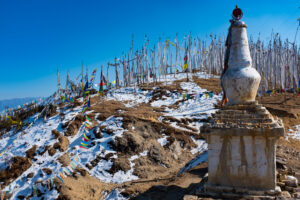
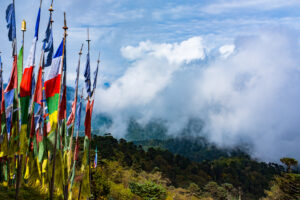
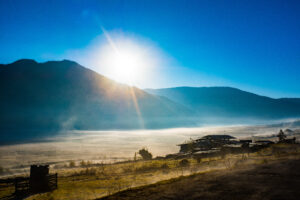

5 Days Travel Plan
Embark on an enchanting journey through the mystical kingdom of Bhutan with our meticulously crafted 5-day travel plan. Get ready...

(Solo Trip)5 Days Travel Plan
Looking for an extraordinary travel experience as a single traveler? Look no further than Bhutan! Known as the “Land of...
